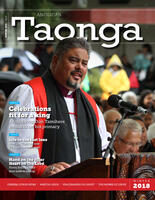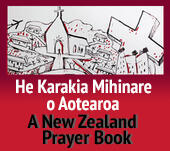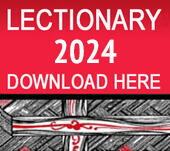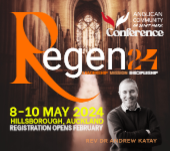“Those who gathered much had nothing over, and those who gathered little had no shortage; they gathered as much as each of them needed.” Exodus 16:18
As a society we seem to have lost any concept of too much, and have an endless tolerance for too little
Our social services agencies are seeing the rise of a new problem in Aotearoa New Zealand, known as ‘in work’ poverty.
270,000 NZ children are deemed to be in poverty, even though 40% of them have a parent in full-time work.
Take Jacinta and her husband, who both work full-time in minimum wage jobs. They can cover rent and food, but not a lot else. Extras like holidays or saving for the future are out of the question.
A major source of stress is the kids getting sick. Not just because of the doctor’s bill, but because they cannot afford the time off work to care for them.
When the minimum wage was introduced, it was 83% of the average wage. Now, it is 53%.
That is low enough to place working families below New Zealand’s official poverty line.
Don’t get me wrong. Jacinta and family can survive, partly because they have a supportive family. But, if you are working full-time, surely you should be able to live, not just survive.
The Living Wage movement takes the simple suggestion that if someone is working full-time, they should be able to participate fully in society.
The church has long since advocated for a fair working wage in the face of society’s downward pressures on costs.
In 1878, a clergyman called Joseph Cook distinguished between “starvation wages” and “just wages”.
In 1888, Dunedin’s Rutherford Waddell preached his famous “Sin of Cheapness” sermon against unjustly low wages.
In 1891, Pope Leo XII proclaimed that there should be a living wage.
The Living Wage movement was launched in Aotearoa New Zealand in 2012. But despite media coverage, Wellington and Hamilton City Council endorsements, and the Warehouse opting for a Living Wage for many of their employees, it is still commonly misunderstood.
The Living Wage movement is not a minimum wage campaign. The minimum wage is an arbitrary political figure, which is enforced in legislation. By contrast, the Living Wage is based on the Annual Food Cost Survey, the Ministry of Business, Innovation and Employment’s national rent figures and Statistics NZ expenditure figures for low decile households.
It takes into account childcare costs and a contribution to KiwiSaver and calculates what comes in from tax credits and govt subsidies.
In other words, the figure is tied to the actual cost of living in New Zealand.
BROAD BASE OF SUPPORT
One reason the Living Wage is gaining momentum is that it has a genuinely broad base of support. The Conservative Mayor of London, Boris Johnson has said, “Paying the London Living Wage is not only morally right, but makes good business sense too. What may appear to be an unaffordable cost should more often be viewed as a sound investment decision.”
It can look like good business sense for a number of reasons. One of the most compelling is the high cost of staff turnover.
When the Warehouse recently announced it would move to being a Living Wage employer, its CEO Mark Powel said cutting turnover rates by as little as 1% would save a quarter of a million dollars a year.
When San Francisco Airport took on the Living Wage, affecting 5400 employees, the turnover amongst security screeners dropped from 95% to 19%.
The Living Wage movement has been gaining ground in the UK and USA since the early ‘90s. That means the arguments on what ills might happen as a result of the Living Wage, can be held up against real figures measuring its impact.
In 2003, a survey of 20 US cities who had legislated on the living wage concluded that in most municipalities, “contract costs increased by less than 0.1% of the overall local budget in the years after a living wage law was adopted.”
No evidence appears to support the oft-quoted theory that the Living Wage will lead to mass unemployment.
The Los Angeles living wage ordinance affected 7,700 workers. Of those, less than 1% lost their jobs. At San Francisco Airport, jobs covered by the Living Wage increased by 15%, despite a 9% decrease in airport activity.
But there’s another story that no amount of number-crunching can tell. That is the hope of hundreds of women and men like Jacinta, struggling on not enough to look after their children. The people who will no longer have to consider medical expense a luxury.
Then there’s the thousands of school kids who’ll be able to pay attention to their homework, or even get a good night’s sleep, because the family expenses stretch to heating the house.
Then there’s the positive impact on health, education and justice system budgets, as poverty rates go down – and for some – inequality swings a little closer to balance.
Churches can join the campaign very easily. Once there, we can develop and strengthen our ties with the local community by supporting a wider conversation about paying wages that respect people’s dignity.
Congregations can promote the idea by inviting local business leaders, workers, community boards and council members to a Living Wage presentation in our churches.
For more information, check out livingwage.org.nz or contact me via the address below.
The Rev Jolyon White is Social Justice Enabler for the Diocese of Christchurch.
justice@anglicanlife.org.nz

















Comments
Log in or create a user account to comment.